Understanding the Timeline of a Bathroom Remodel
A bathroom remodel is an exciting yet detailed process that requires careful planning and execution. The total time for a bathroom renovation can vary significantly depending on the size of the space, the extent of the remodel, and how quickly materials and permits can be secured.
On average, a full bathroom remodel takes 3 to 8 weeks, but some projects may be completed faster, while others might take longer due to unexpected delays. Understanding the different phases of a remodel can help you set realistic expectations and ensure the project runs smoothly.
Key Phases of a Bathroom Remodel
1. Pre-Construction Phase– Planning & Preparation
Before any demolition or construction begins, the planning phase sets the foundation for a smooth remodel. This step is crucial to avoid delays and unexpected costs later in the project.

What happens during this phase?
Design & Material Selection: You’ll choose everything from tiles, countertops, and cabinetry to plumbing fixtures, lighting, and mirrors. This is an exciting step because you get to visualize your dream bathroom!
Budget Planning: Define your budget early on to avoid unexpected expenses. Setting aside an additional 10-15% for contingencies is always a good idea.
Hiring Contractors: If you’re not doing a DIY remodel, you’ll need to hire a general contractor, plumber, electrician, and tiling specialist.
Getting Permits & Approvals: Depending on your location, you may need permits for plumbing, electrical work, or structural changes. Securing these permits can take anywhere from a few days to several weeks.
Scheduling & Ordering Materials: Order tiles, vanities, fixtures, and other materials in advance. Special orders or custom pieces might take weeks or even months to arrive, so planning ahead is essential.
2. Demolition & Site Preparation– Clearing Out the Old
Now that the planning is complete, it’s time to remove the old bathroom fixtures and materials. This step can be messy but is essential for making way for the new design.
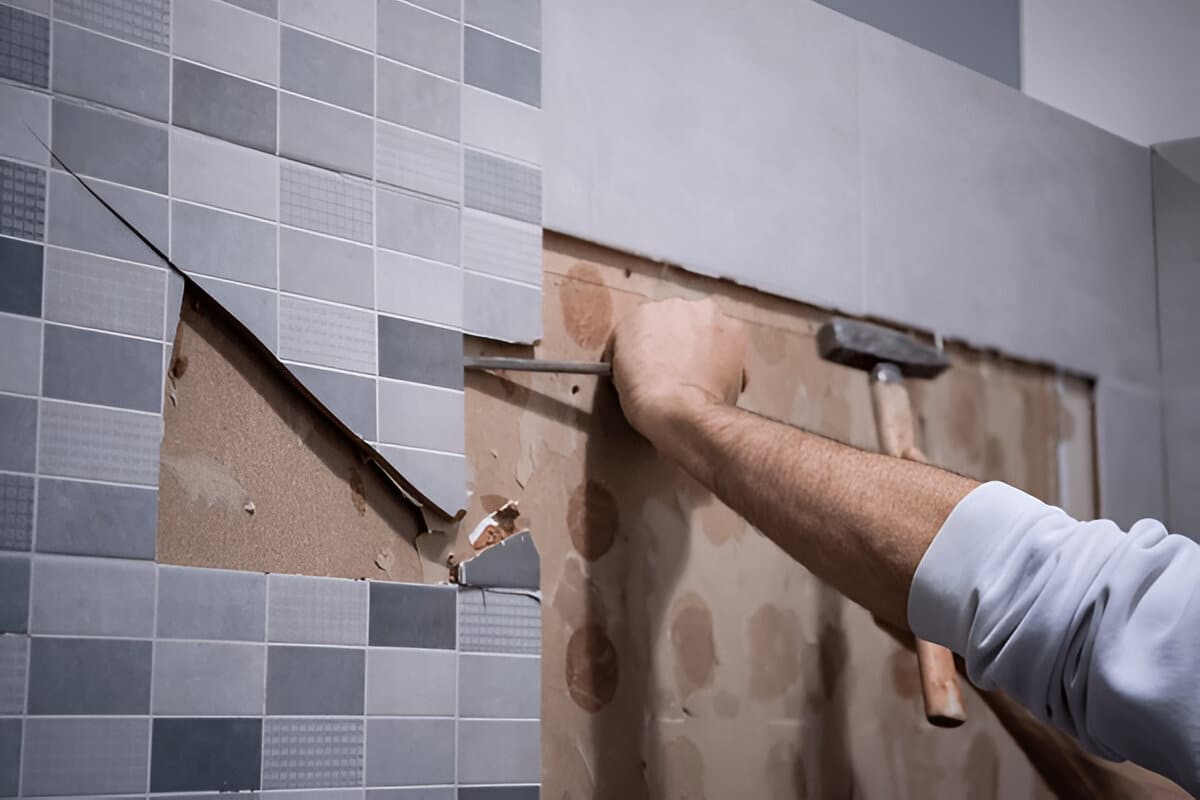
What happens during this phase?
Removing Old Fixtures & Materials: The bathtub, sink, vanity, toilet, tiles, and even drywall might need to be removed.
Protecting the Home: Contractors will cover floors and doorways to minimize dust and debris in other parts of your house.
Checking for Hidden Issues: Once everything is stripped away, unexpected problems such as water damage, mold, or faulty wiring may be revealed. These issues need to be addressed before moving forward, which can add time to the remodel.
Time Considerations:
Small bathroom demolition: 1-2 days
Larger bathroom or extensive changes: 3-5 days
3. Plumbing & Electrical Work– Setting Up the Essentials
This phase is critical because it ensures that your bathroom functions properly for years to come. If you’re relocating your shower, sink, or toilet, additional plumbing and electrical work will be required.

What happens during this phase?
Plumbing Installations: New water supply lines and drainage systems are set up. If your remodel includes new fixtures or moving your bathtub or sink, plumbers will need to reroute the pipes.
Electrical Work: This includes installing new outlets, light fixtures, exhaust fans, and even heated floors if desired.
Inspections: After plumbing and electrical work are completed, inspections are usually required to ensure everything meets local building codes. If your project needs an inspection, factor in extra time for scheduling and approval.
Time Considerations:
- Minor plumbing and electrical updates: 3-4 days
- Major layout changes: 5-7 days
4. Drywall, Flooring & Tile Installation– Bringing the Space to Life
This is where your bathroom starts taking shape! Walls are sealed up, floors and shower areas are prepared, and the new design elements begin to come together.
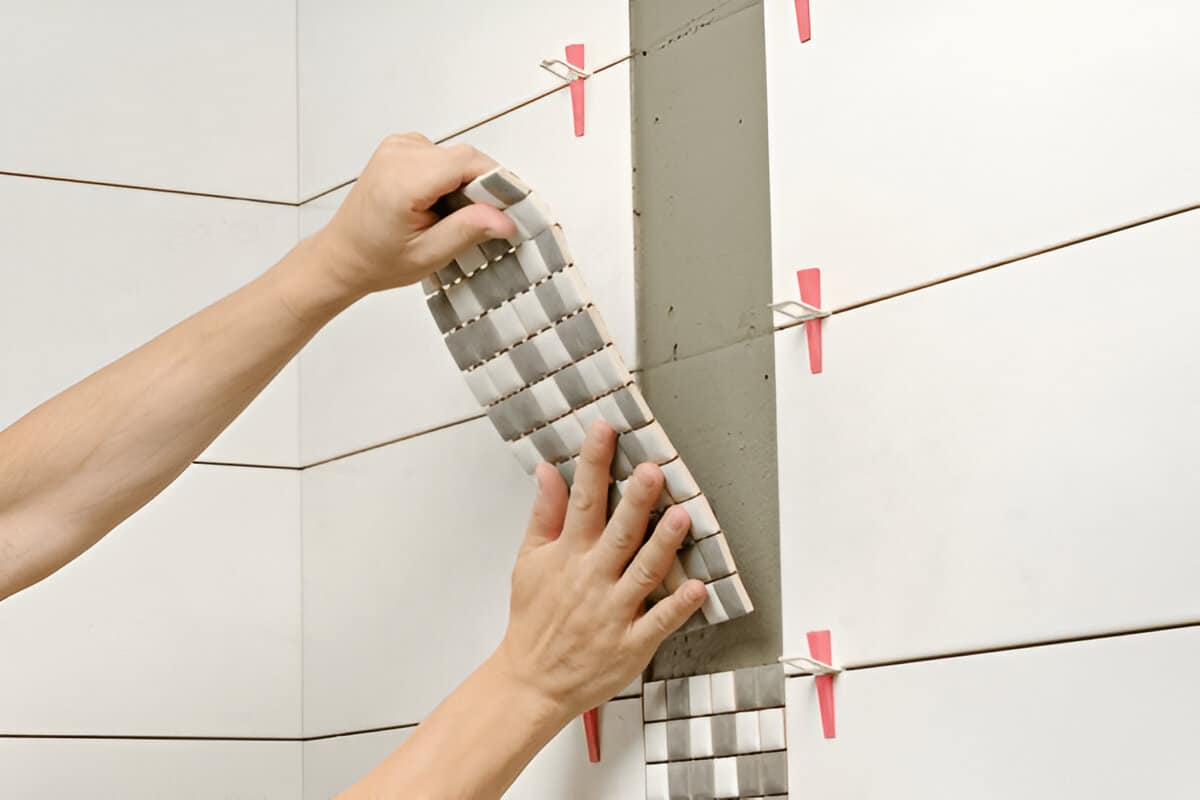
What happens during this phase?
Drywall Installation & Waterproofing: Once plumbing and electrical work are complete, walls are rebuilt with drywall. In wet areas like the shower, waterproof materials such as cement board or waterproof membranes are used.
Tiling the Floor & Shower Walls: This is one of the most time-consuming steps in the remodel. The more intricate the design, the longer it takes. Small mosaic tiles require more effort than large-format tiles.
Time Considerations:
- Drywall installation & waterproofing: 2-4 days
- Floor & shower wall tiling: 5-7 days
5. Fixture & Vanity Installation– Adding the Key Features
Now that the floors and walls are complete, it’s time to install the essential bathroom components.

What happens during this phase?
Toilet Installation: This is usually one of the quickest tasks and can be done in a few hours.
Sink & Vanity Installation: Your bathroom vanity, countertops, and sink are put into place. This step also includes installing mirrors and medicine cabinets.
Lighting & Hardware: Light fixtures, towel bars, and other accessories are mounted.
Time Considerations:
- Vanity & sink installation: 1-2 days
- Lighting, mirrors, and accessories: 1-2 days
6. Final Touches & Inspections– Completing the Project
The last phase of the remodel involves fine-tuning all the details and ensuring everything works perfectly.
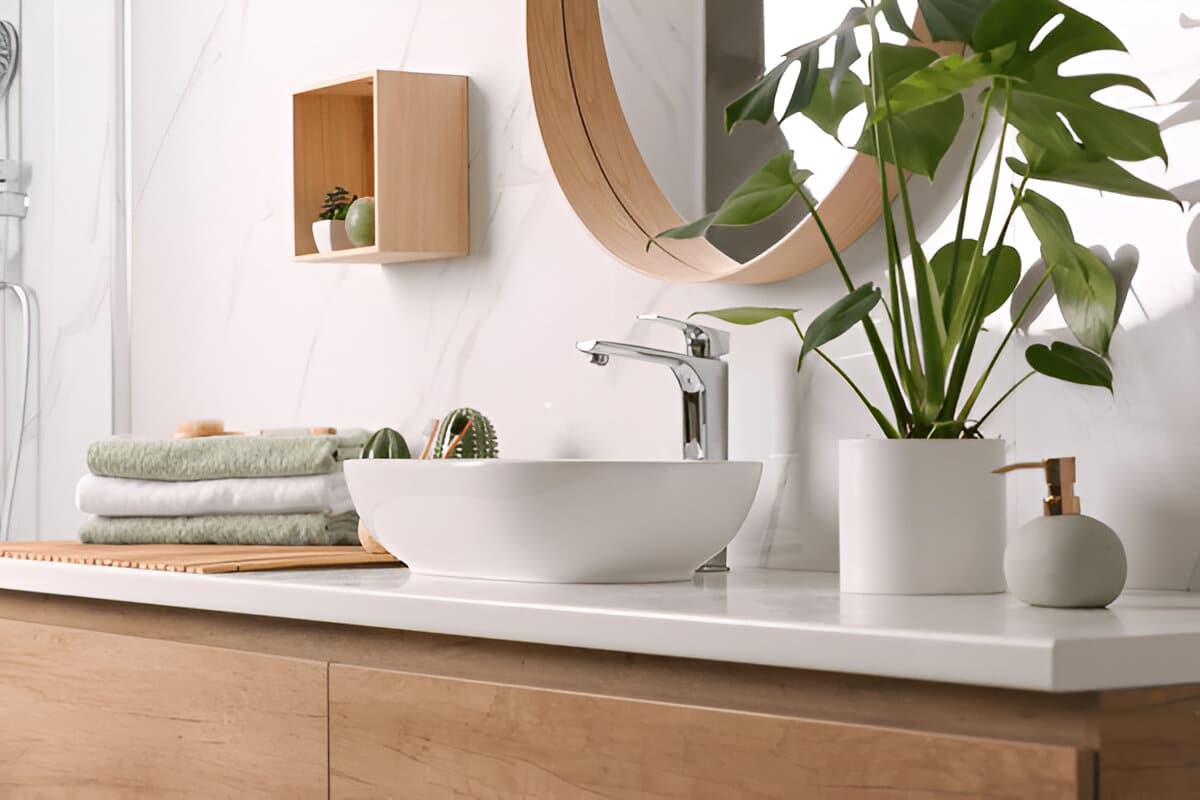
What happens during this phase?
Painting & Finishing Details: If needed, walls are painted, caulking is done around fixtures, and any small touch-ups are completed.
Deep Cleaning: The space is cleaned to remove dust and debris.
Final Inspection & Walkthrough: If your project required permits, a final inspection ensures all work complies with building codes. The contractor will also walk through the bathroom with you to check for any last-minute adjustments.
Time Considerations:
- Painting & caulking: 1-2 days
Final walkthrough & touch-ups: 1-2 days
What Can Delay a Bathroom Remodel?
Even with the best planning, unexpected issues can arise during a bathroom remodel that can slow down progress. Understanding these potential delays can help you prepare for them and keep your project on schedule.
Material Delays
One of the biggest reasons for delays is waiting for materials to arrive. If your remodel includes custom or imported materials, such as a custom vanity, specialty tiles, or high-end fixtures, they can take weeks or even months to be delivered.
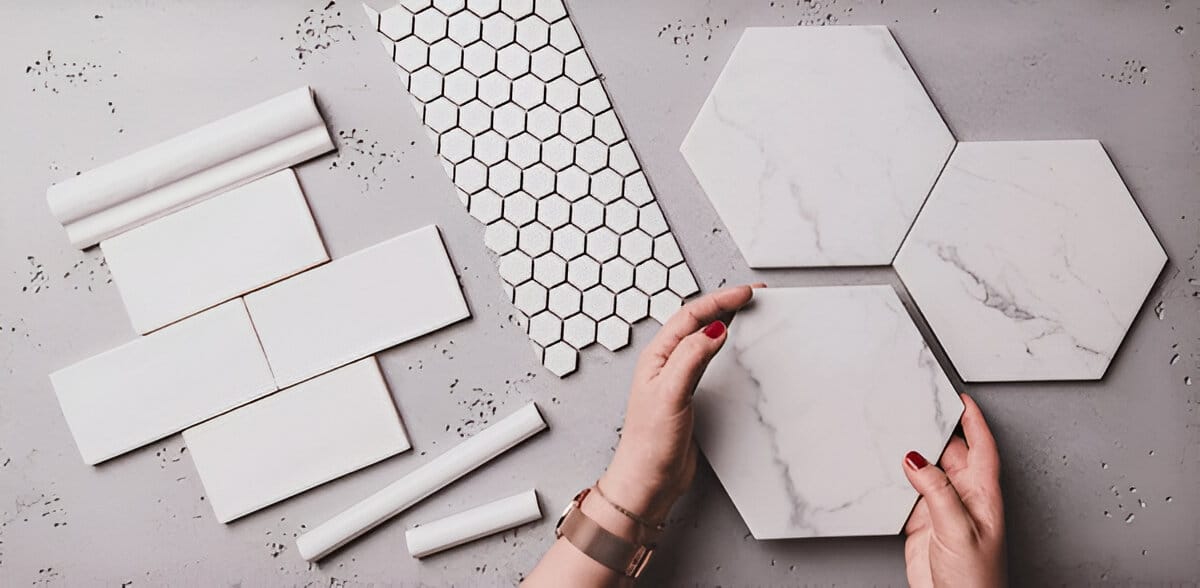
How to Avoid Material Delays:
Order all materials in advance. Before starting the remodel, confirm that all necessary materials are in stock and ready to be shipped.
Have backup options. If a specific tile or fixture is out of stock, choose an alternative that is available immediately.
Work with suppliers that provide accurate lead times. Some companies offer faster shipping or have warehouses with readily available stock.
Permit & Inspection Delays
If your bathroom remodel includes moving plumbing lines, upgrading electrical wiring, or making structural changes, you will likely need permits. Inspections are required to ensure everything is up to code before moving forward with the next phase.
However, local permit offices can be slow, and scheduling inspections can take days or even weeks.
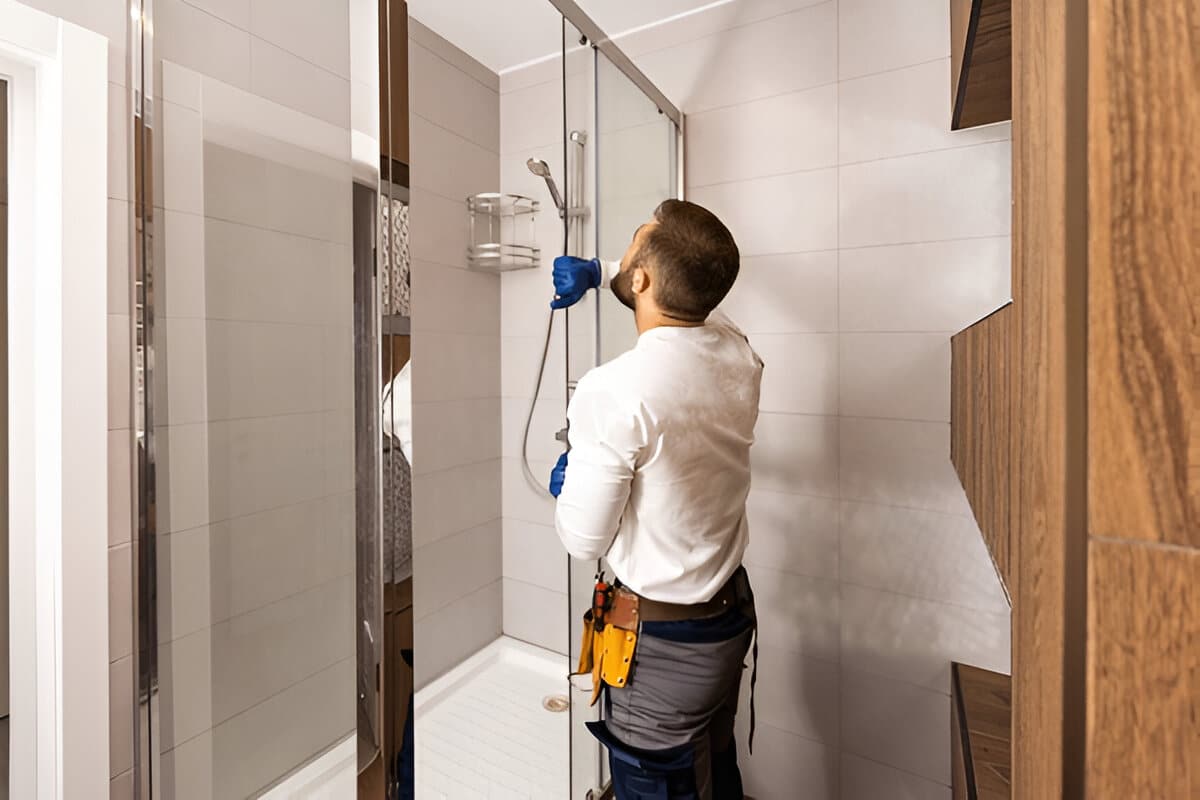
How to Avoid Permit Delays:
Apply for permits as early as possible. Some permits take longer to process, so get them approved before demolition starts.
Work with a contractor familiar with local building codes. A contractor who understands the rules can help you avoid unnecessary permit rejections.
Schedule inspections in advance. Some cities have long wait times for inspections, so plan accordingly to prevent unnecessary downtime.
Contractor Availability & Scheduling Conflicts
If you’re hiring multiple professionals like plumbers, electricians, tiling specialists, and painters, scheduling conflicts can occur. Some contractors may have multiple jobs at the same time, which can lead to delays.
How to Avoid Contractor Delays:
Book your contractor in advance. If you wait too long to hire a professional, they might already be booked for months.
Use a general contractor. Instead of hiring multiple specialists separately, a general contractor can manage everything and streamline scheduling.
Confirm the work schedule before the project starts. Set clear expectations on when each phase will be completed and who is responsible for each task.
Unexpected Issues (Plumbing, Mold, Structural Damage)
Once demolition begins, hidden problems like old or damaged plumbing, faulty wiring, mold, or water damage may be discovered. These issues must be addressed before continuing, adding extra time and cost to the project.
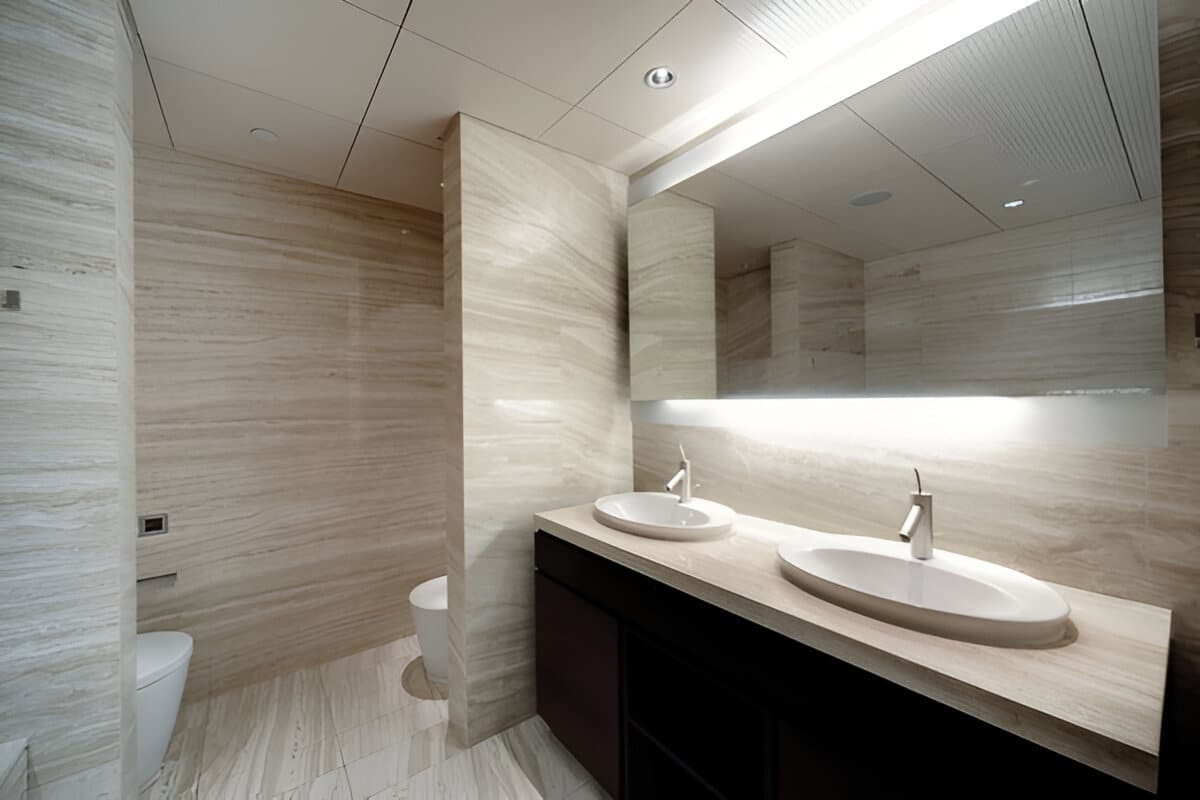
How to Prepare for Unexpected Issues:
✔️ Have a contingency budget. Set aside at least 10-15% of your budget to cover unexpected repairs.
✔️ Get a professional inspection before starting. A plumber or electrician can assess potential issues before demolition.
✔️ Work with experienced contractors. They can quickly identify and solve problems without causing significant delays.
Changes in Design or Scope
One of the most common reasons for a delayed remodel is last-minute design changes. If you decide to change the tile, vanity, or layout mid-project, it can slow down progress because new materials need to be ordered, and previous work may have to be redone.
How to Avoid Delays Due to Design Changes:
Finalize all design choices before starting. Make sure you love your selections before construction begins.
Get 3D renderings or samples. Seeing a digital preview or physical sample of your chosen materials can help prevent second-guessing.
Stick to the plan. If you change your mind after construction starts, it will cost more time and money.
How to Speed Up Your Bathroom Remodel
Now that you know what can delay a bathroom remodel, let’s look at ways to keep your project on schedule and even speed up the process!
Plan Everything in Advance
Many delays occur because of poor planning. Having a detailed construction schedule, material list, and design plan ready before starting will save you time and headaches.
How to Plan Effectively:
Create a timeline with realistic expectations. Break down each phase (demolition, plumbing, tiling, etc.) so you can track progress.
Make all design choices before starting. Selecting materials and fixtures ahead of time prevents unnecessary delays.
Order materials early. Don’t wait until the last minute—get all necessary items delivered before demolition begins.
Hire Experienced Professionals
The right team can make a huge difference in how smoothly your project runs. Experienced contractors know how to avoid common delays and work efficiently.
How to Find the Right Professionals:
Check reviews and references. Look for contractors with a track record of on-time and high-quality work.
Get multiple quotes. Comparing different professionals helps you find the best balance between cost and experience.
Hire a general contractor. They can coordinate all workers, reducing downtime between different phases of the remodel.
Stick to the Original Design
Changing your mind mid-project can cause major delays and extra costs. The best way to keep your remodel on track is to commit to your design choices before construction begins.
How to Stay on Track:
Take your time during the planning phase. Be 100% sure about your choices before starting.
Use design visualization tools. 3D renderings and mood boards can help you picture the final result.
Trust your contractor’s expertise. They can guide you on which materials and layouts will work best.
Schedule Inspections Early
If your remodel requires plumbing, electrical, or structural inspections, waiting for approvals can slow down progress. Scheduling them in advance ensures a smooth workflow.
How to Avoid Inspection Delays:
Know which inspections are required. Ask your contractor about necessary permits and inspections.
Book inspections before starting work. Some cities have long wait times, so plan ahead.
Ensure all work meets building codes. A failed inspection means redoing work, which can add days or weeks to your timeline.
Work on Multiple Tasks Simultaneously
If possible, having multiple parts of the remodel happening at the same time can speed up the project.
Ways to Work More Efficiently:
Overlap tasks where possible. For example, while waiting for inspections, contractors can work on painting or preparing the space.
Have materials delivered before they’re needed. This ensures workers can start immediately without delays.
Use a well-coordinated team. A general contractor can ensure different workers (plumbers, electricians, tile installers) don’t get in each other’s way.
How to Keep Your Remodel on Track
A bathroom remodel doesn’t have to be stressful or take longer than expected. By planning ahead, hiring the right professionals, and avoiding common delays, you can complete your remodel on time and within budget.
Summary of How to Avoid Delays:
Order materials early
Get permits before starting
Hire experienced contractors
Stick to your design choices
Schedule inspections in advance
With the right approach, your dream bathroom can become a reality without unnecessary delays!
Ready to start your remodel? Check out our bathroom remodeling services!


